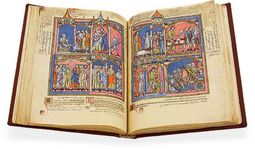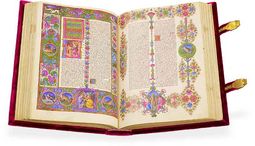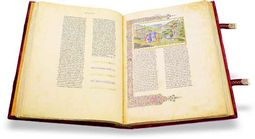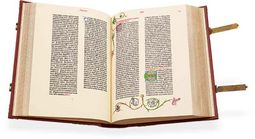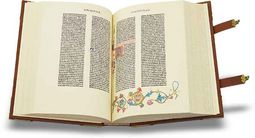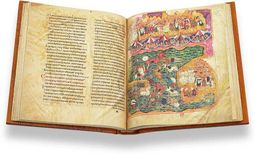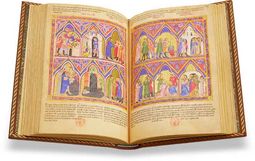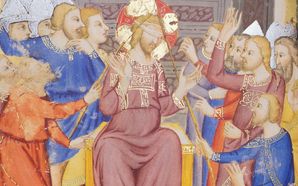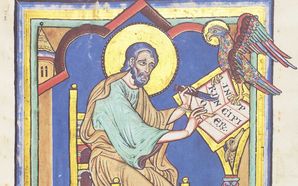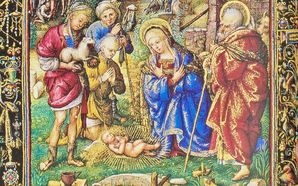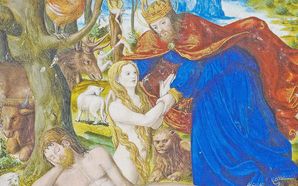Bibles
While Biblical texts were the most common subject for medieval manuscripts, complete Bibles were prohibitively expensive to produce because of the sheer size of the text.
Nonetheless, some of the highest-ranking members of the European aristocracy like King Louis the Saint or Duke Borso d’Este commissioned magnificent manuscripts of the Bible, especially during the High- and Late-Middle Ages. These manuscripts are characterized by their impressive size and by the richness of their adornment because they were usually intended to be display pieces.
Unlike most medieval manuscripts, illuminated Bibles were primarily image-based, so the miniatures and other décor were usually added first and the text was inserted later. As a result, illuminated Bibles feature some of the most accomplished miniature painting to survive to today.
The invention of the printing press paired with the proliferation of vernacular Bibles provided a wealth of Bibles and became a catalyst for the Reformation as a result because increased literacy allowed more people to meditate on and question the teachings of the Catholic Church.
Demonstration of a Sample Page
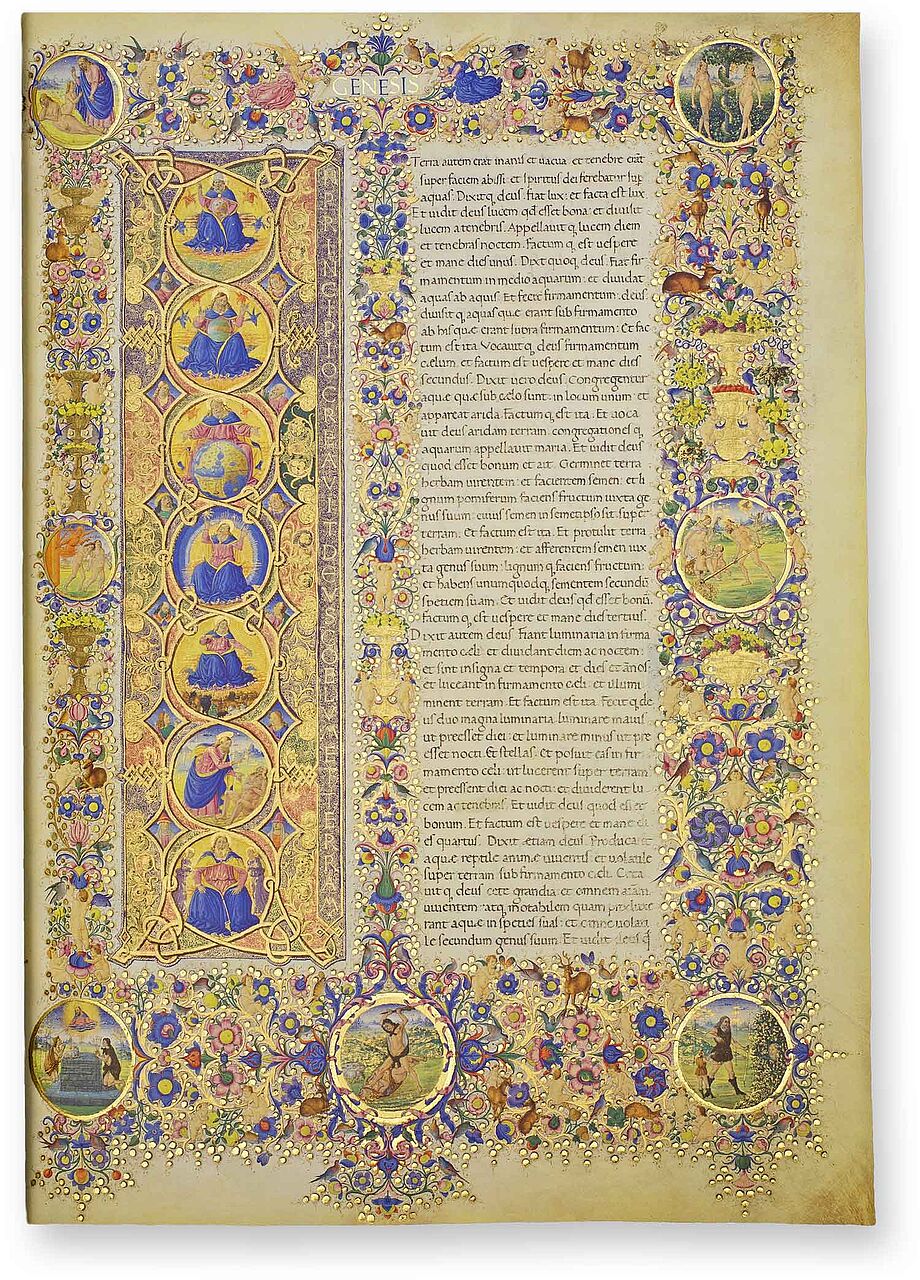
Bible of Federico da Montefeltro
Scenes from Genesis
Fourteen incredibly detailed medallion miniatures are presented in equally elaborate frames on this incredible page from the Book of Genesis. Arranged in a column, the six days of Creation are shown in an interlace frame of red, green, purple, and gold with God resting on the seventh day at the bottom with his hands on his knees.
Presented in a tangle of floral tendrils teeming with deer, birds, cherubs, and angels, seven more medallion miniatures show important events from Genesis. The Creation of Eve and Fall of Man are depicted at the top followed in the middle by the Expulsion from Paradise and a scene of Adam tilling the fields. At the bottom we see the story of Cain and Abel as well as the Nephilim, a race of giants killed in the Great Flood.

